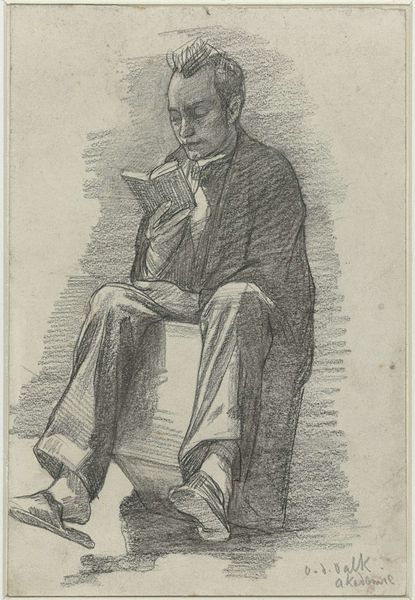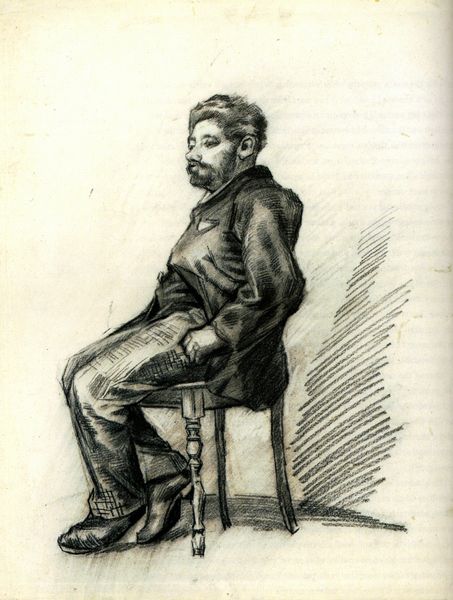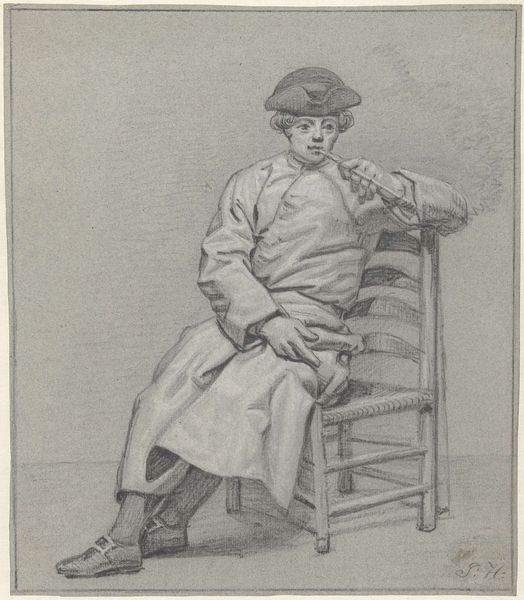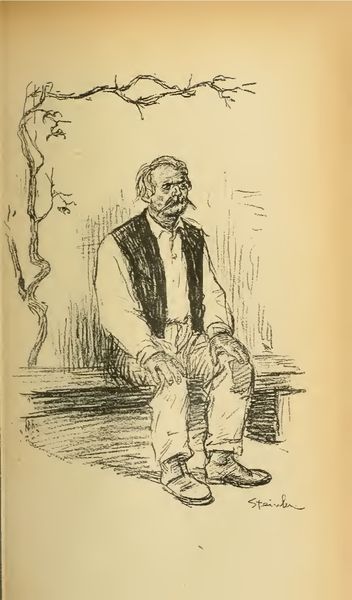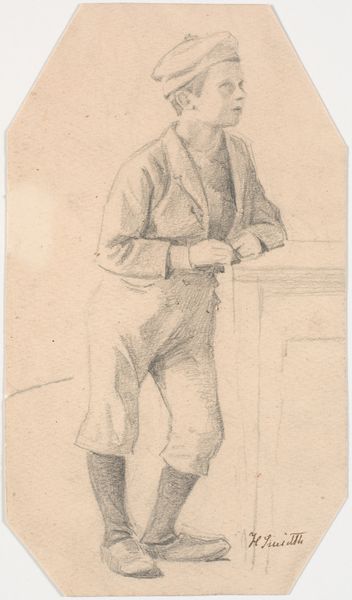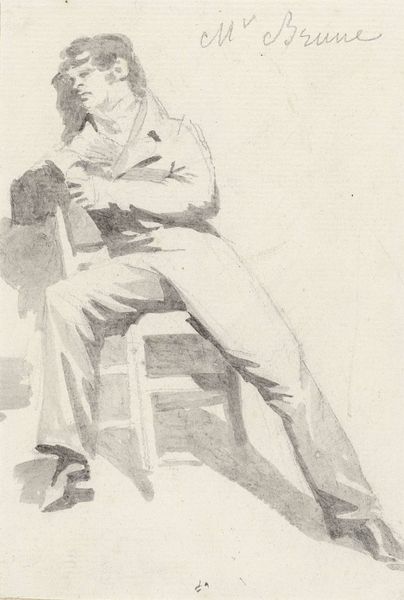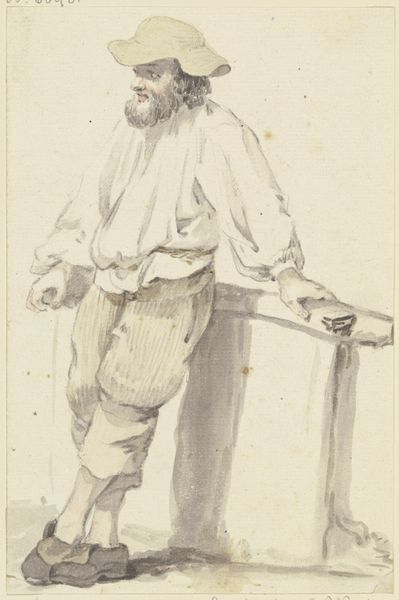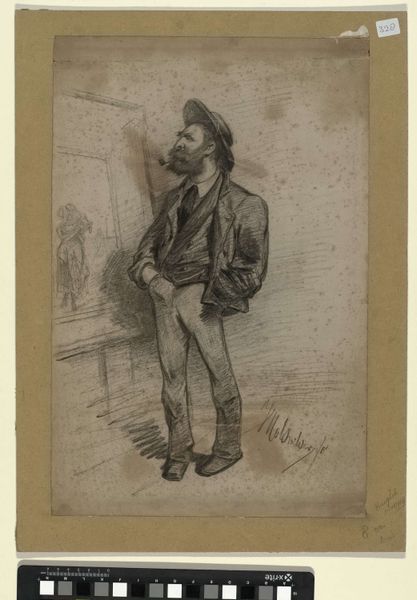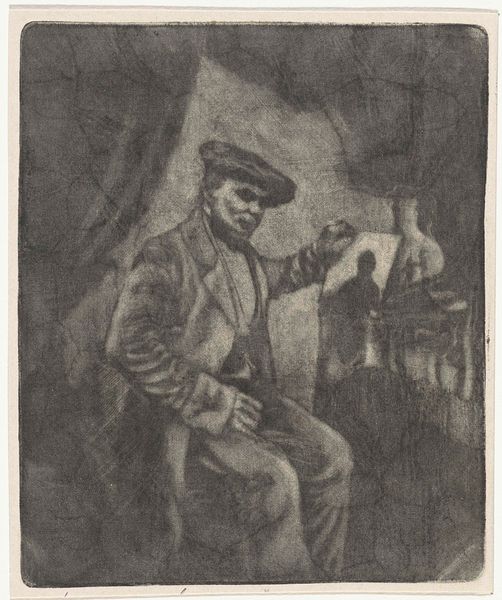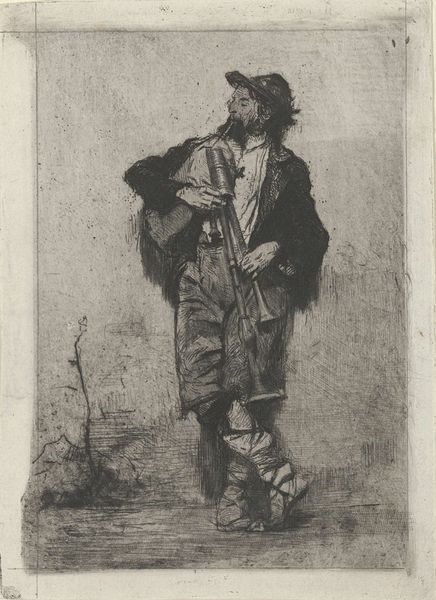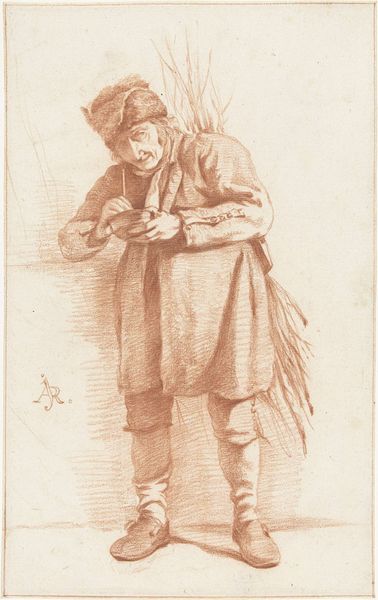
drawing, pencil
#
portrait
#
pencil drawn
#
drawing
#
16_19th-century
#
pencil sketch
#
pencil drawing
#
pencil
#
sketchbook drawing
#
portrait drawing
#
genre-painting
#
realism
Dimensions: height 207 mm, width 164 mm
Copyright: Rijks Museum: Open Domain
Curator: I find this sketch immediately compelling in its simplicity. Editor: It has a kind of quiet dignity, doesn’t it? The grayness seems to amplify the subject's weariness. Let's delve in; we are looking at “Zittende Werkman,” or “Sitting Worker,” a pencil drawing created in 1857 by Anton Mauve. It's held here at the Rijksmuseum. Curator: Mauve's choice of pencil elevates the workingman; typically, academic sketches in pencil or chalk would have served as studies for future paintings of the upper classes, mythology, or genre paintings destined for wealthy buyers. Instead, Mauve chose to memorialize this worker in what amounts to a preparatory medium. This gives us insight into how laborers were perceived and presented during the rise of Realism, shifting the focus of artistic interest to the working class. Editor: You're right; the very directness of the medium matches the honesty of the portrayal. But notice, too, the deliberate composition—the angle of the figure's pose creating these beautiful lines; the way his clogs contrast with the smoother surface he's sitting on... And look at the light catching his face, so subtly. Curator: And how does the medium speak to class itself? Mauve almost certainly used a commercially produced pencil of graphite encased in wood. As industry changed during this period, creating and buying such materials became less prohibitive and put some forms of art making within reach of middle and working class people. Consider the distribution networks and the rising consumer culture; this artwork embodies not just labor in the immediate visual scene but also Mauve’s own artistic labor made possible by other laborers working with specific materials and processes. Editor: I'm seeing it with new eyes now; but it’s so interesting how the sketch still works aesthetically and symbolically, with that downward gaze implying a heavy mood. The figure seems so weighted, confined by the visual space… it adds so much depth beyond just documentary value. Curator: Indeed. Considering Mauve’s social context—his connections to the Hague School and his focus on rural subjects—this piece opens up crucial conversations around how the period of Realism portrayed working class members in contrast to Romanticized depictions from before, revealing artists grappling with labor and modern experience. Editor: It truly provides much to think about; and now it will provide our listeners even more insight.
Comments
No comments
Be the first to comment and join the conversation on the ultimate creative platform.
